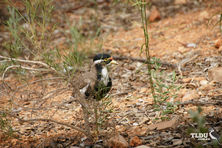
Shoppers Feedback:
Jan 17, 2017
Hello Ros,
I have now paid the invoice, but I would like to write to you just to say a big THANK YOU for getting me the Penguin!
The ChatterMate Penguin became a nice memory for me when I was in New Zealand, and I am so greatful to you for arranging so that I could have it! :-)
Thank you so much!!!!!!!!!!!
Regards,
Malin
Hi Ros,
Many thanks for your very kind email. I really appreciate your prompt reply!
I appreciate your advice regarding the decorations and customs. These are a gift for my daughter’s exchange student family so when she returns home on the weekend I will show her and see if she loves them as much as I do!
Thanks so very much again - I am truly grateful for your kind assistance.
Kind Regards
Bernadette
Ros,
Thanks again for the great customer service. It's a refreshing change!
Best regards,
Trevor
Hey Roz,
Thank you for your emails. Just loved my first order. The cute little Aussie bush critters are going to be used for an office Christmas decoration. My colleagues also liked them and talked about making an order to your site. I'll send you a photo when completed.
I'll be ordering more to send to my daughter's host family in America.
Fabulous service from you.
Kind regards,
Michelle
Thankyou. Order arrived today. One very happy grandson with his new beastly binoculars.
Regards,
Irene
- Home
- Wild Wonders
- Shop
- Aromas of Australia
- Australian Made
- Books
- Book Marks
- Christmas Decoration Sale
- Christmas Decorations
- Clocks
- Drink Holders
- Garden & Outdoor
- Gift Wrapping & Cards
- Home & Giftware
- Jewellery
- Keyrings
- New Products
- Pencils & Pen Holders
- Photo Frames
- Plush Toys
- Plush with Sound
- Sheepskin Rugs
- Stationery
- Stone Carvings
- Toys & Games
- Travel Goods
- Wedding
- Wild Figurines
- Wildlife Safety Products
- Wind Chimes
- Wine Charms
- View All Products
- Wildlife
- Australiana
- Explore
- Contact Us
Banded Lapwing

Quick Facts
| Length: | 27 cm |
| Height: | - |
| Weight: | 190 grams |
| Colour: | - |
| Habitat: | Open short grasslands such as heavily grazed paddocks, agricultural lands and saline herblands in dr |
| Food: | Insects and may eat seeds in dry times. Also eats worms, spider, snails and slugs |
| Predators: | - |
| Status: | - |
The Banded Lapwing is a large plover with a broad black breast band and white throat. The upperparts are mainly grey-brown with white underparts. There is a black cap and broad white eye-stripe, with a yellow eye-ring and bill and a small red wattle over the bill. The legs are pinkish-grey. These lapwings have an upright stance and a slow walk, breaking into a faster trot when alarmed. They fly with quick, clipped wing-beats - giving them the name 'lapwing'.
The Banded Lapwing is much smaller than the Masked Lapwing with a longer tail and shorter legs. The u-shaped breast band is diagnostic.
Banded Lapwings are endemic to (found only in) Australia in the east, south and west of the mainland and in Tasmania. They are rarely found in northern Australia.
Banded Lapwings prefer open, short grasslands such as heavily grazed paddocks, agricultural lands and saline herblands in dry and semi-arid regions.
Banded Lapwings are nomadic, flying considerable distances at night to find suitable conditions of food and water.
Banded Lapwings chase insects with short runs and darts and may eat seeds in dry times. They prefer areas with very short grass, to find insects, worms, spiders and molluscs (snails and slugs).
Banded Lapwings need rain before breeding. The nest is a scrape on the ground, lined with dry grass and even sheep droppings. The eggs and chicks are speckled and well-camouflaged. They freeze and keep quite still at sign of danger. The parents defend their nest and young with great courage and will fly at human intruders, often with a distraction display, pretending to drag a broken wing.
Habitat has been increased by the clearing of woodland and converting land to agriculture, although improved pasture, with longer grass, is less suitable for the Banded Lapwings.
Last Updated: Thursday 9th January, 2014
BirdLife Australia - www.birdlife.org.au
BUSH e-TELEGRAPH
Signup for our monthly newsletter the "e-Telegraph"
Quick Links
Home | The Beginning | About The Land Down Under | Wild Wonders | Advertise on Wild Wonders | Christmas Decoration Sale | Christmas Tree Decorations | Drink Holders | Plush with Sound | Stone Carvings | Wildlife Wine Charms | Freebies | Australian Wildlife | Help Our Wildlife | Australiana | Photo of the Month | Explore The Land Down Under | Contact Us | Legal Notices

